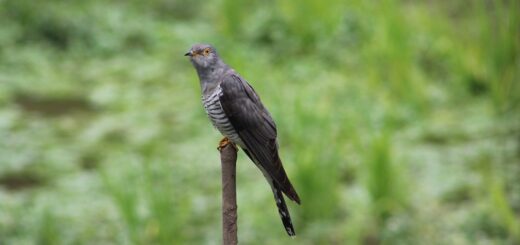Tawny Owl
The Tawny Owl: A Fascinating Nocturnal Predator
The tawny owl, scientifically known as Strix aluco, is a species of owl that is widely distributed across Europe and Asia. It is a medium-sized owl with a round face and a distinctive tu-whit, tu-whoo call that is often associated with the nighttime. The tawny owl is a fascinating creature with a rich history and a range of interesting behaviors and characteristics that make it an intriguing subject for study.
Physical Characteristics and Habitat
The tawny owl is a relatively large owl, with a wingspan of around 100-125 cm and a body length of 37-39 cm. It has a rounded body and a large, flat head with dark, piercing eyes. Its plumage is a mottled brown, which provides excellent camouflage in woodland habitats. The tawny owl is primarily nocturnal, preferring to hunt and feed under the cover of darkness. Its preferred habitats include woodlands, forests, and parks, where it can find suitable roosting and nesting sites.
One of the most interesting physical characteristics of the tawny owl is its distinct call, which is often used to identify the presence of this species in a particular area. The male typically produces the familiar tu-whit sound, while the female responds with a tu-whoo call, creating a haunting duet that is often heard in the stillness of the night.
| Physical Characteristics | Habitat |
|---|---|
| Mottled brown plumage | Woodlands, forests, and parks |
| Distinct tu-whit, tu-whoo call | Excellent camouflage in woodland habitats |
Feeding and Hunting Behavior
The tawny owl is an opportunistic predator, preying on a variety of small mammals, birds, and insects. Its diet commonly includes mice, voles, shrews, and small birds, which it captures using its sharp talons and powerful beak. The tawny owl is a skilled hunter, using its keen eyesight and acute hearing to locate prey in the darkness of the night.
One of the most remarkable hunting behaviors of the tawny owl is its ability to hunt silently. Unlike many other owls, the tawny owl has fringed feathers along the edges of its wings, which allow it to fly almost silently through the air, enabling it to surprise its prey with stealth and precision. This remarkable adaptation makes the tawny owl a highly effective and efficient hunter, ensuring its success in capturing prey under the cover of darkness.
Reproduction and Life Cycle
The breeding season for tawny owls typically begins in late winter, with courtship displays and vocal duets between mated pairs. The female tawny owl lays a clutch of 2-5 eggs in a tree cavity or an abandoned nest, where she will incubate them for around 30 days. Once hatched, the chicks are cared for by both parents, who provide them with a diet of small mammals and birds until they are old enough to leave the nest.
Young tawny owls, known as owlets, are born covered in white down feathers, which are gradually replaced by the distinctive brown plumage of the adult birds. They are dependent on their parents for several months after fledging, during which time they learn essential hunting and survival skills. Once they are independent, young tawny owls will establish their own territories, where they will live and breed in the years to come.
Conservation Status and Threats
The tawny owl is considered to be a species of least concern by the International Union for Conservation of Nature (IUCN), with a stable population and a widespread distribution across its range. However, there are a number of threats that impact tawny owl populations, including habitat loss, urbanization, and road traffic accidents.
One of the primary concerns for tawny owls is the loss of suitable nesting and roosting sites, as traditional woodland habitats are cleared for development and agriculture. Additionally, the increase in urbanization has led to conflicts between tawny owls and humans, as these birds occasionally nest in residential areas, leading to disturbances and potential conflicts with humans.
Another significant threat to tawny owls is road traffic accidents, as these birds are often struck by vehicles while hunting along roadsides at night. This has led to localized declines in some tawny owl populations, particularly in areas with high levels of traffic and disturbance.
Conclusion
The tawny owl is a remarkable and enigmatic creature, with a range of fascinating characteristics and behaviors that make it a captivating subject for study and observation. Its nocturnal habits, distinctive calls, and silent hunting prowess make it a truly unique species, perfectly adapted to life in the darkness of the night.
While the tawny owl faces a number of threats and challenges in the modern world, efforts to conserve and protect its habitats are crucial in ensuring the continued survival of this iconic bird. By raising awareness of the importance of preserving woodland habitats and reducing human-wildlife conflicts, we can all play a part in safeguarding the future of the tawny owl for generations to come.
